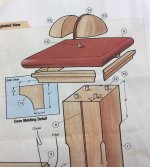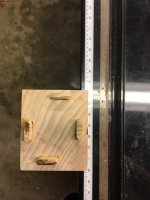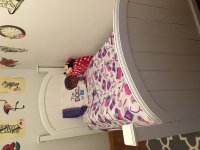I was trying to deviate from using pegs on a project (see attached directions) to use dominos instead. Now I'm in trouble because I can't seem to find how to line up the corresponding mortise.
This is a bedpost. The bedpost is 2-1/2" x 3". sitting on top is a square platform. I used the domino to cut the initial[attachimg=1][attachimg=2]View attachment 1View attachment 2 mortises in the post. I used the left guide and set the mortise all the way around the post going in a clockwise direction. See the picture attached of existing placement. How do cut the mortise in the corresponding square piece that does on top so that it fits?
This is a bedpost. The bedpost is 2-1/2" x 3". sitting on top is a square platform. I used the domino to cut the initial[attachimg=1][attachimg=2]View attachment 1View attachment 2 mortises in the post. I used the left guide and set the mortise all the way around the post going in a clockwise direction. See the picture attached of existing placement. How do cut the mortise in the corresponding square piece that does on top so that it fits?



